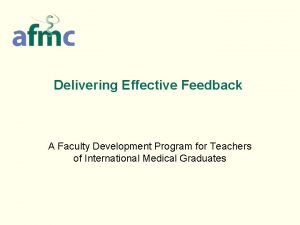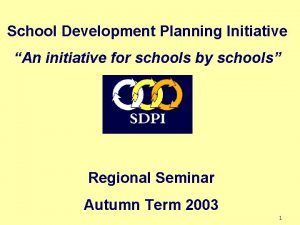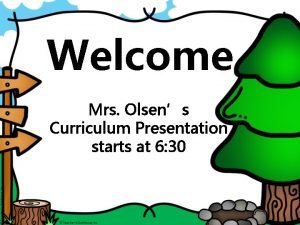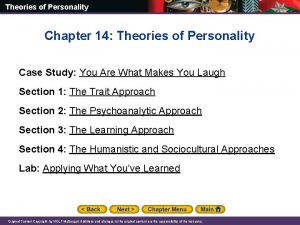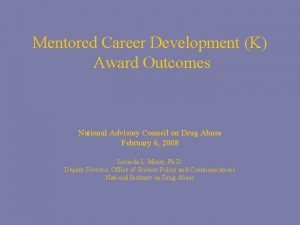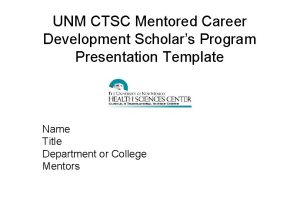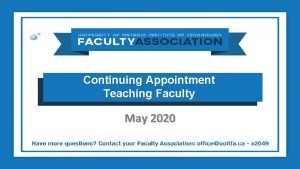Teaching Teachers to Teach A Mentored Faculty Development













- Slides: 13

Teaching Teachers to Teach: A Mentored Faculty Development Experience L 8 A. Society of Teachers of Family Medicine. Medical Student Education Conference. February 3, 2012 Fran Biagioli, M. D. biagioli@ohsu. edu Ben Schneider M. D. Oregon Health & Science University. Family Medicine

Objectives • Identify educational resources to create a faculty development teaching experience • Identify key objectives for training junior faculty to teach effectively • Discuss methods best used for teaching teachers to teach • List examples of junior faculty mentor-mentee teaching opportunities

Not Everyone is a Born Teacher • Teaching can be daunting, but is a learnable skill • We need competent, confident faculty for: – Small Groups – Lectures – Medical Student and Resident Precepting • The Solution: Teach your own teachers with a Mentored Teaching Experience – Residency elective – Junior Faculty

A Mentored Teaching Experience The Mentee is coached through the following: • Teaching students in the clinical setting • Teaching in a large and small group setting • Development and implementation of an instructional session/tool • Co-Precepting residents in clinic with senior faculty • Giving negative and positive feedback to a variety of learners on a diverse set of skills

Clinical Teaching • Teaching a variety of learners

Clinical Teaching. The Mentee: • Teaches in clinic with varying levels of learners – Junior and Senior Students, Residents, Peers • Identifies goals for learners for each clinic session • Gives feedback to their learner regularly – Identifies what learners did well and areas for improvement – Gives feedback on notes daily • Debriefs weekly with Senior Faculty – Positives, negatives, efficiency, giving feedback

Small Group • Co-facilitate small group discussion (insert photograph of a small group teaching experience)

Small Group Facilitation. The Mentee: • Co-facilitates small groups: – ‘Art of Medicine’ Small Group Discussions – Physical Examination Small Group Discussions and Problem Based Learning – Third year Family Medicine Clerkship Small Group discussions • Receives real-time instruction from co-faculty • Receives weekly instruction from Mentor on small group instruction techniques

Curriculum Basics • Develop, Implement, Evaluate (insert photo of a large group teaching experience)

Curriculum Basics. The Mentee: • Chooses one focused topic and an audience • Develops an interactive teaching session/tool (seminar, workshop, website, etc) • Implements for the Third Year Clerkship or Residents • Receives guidance on defining Competency based Goals/Objectives, session development, and evaluation of the product

A Mentored Teaching Experience • Resident Elective in Teaching. Family Medicine Digital Resource Library 3302. 2011. http: //www. fmdrl. org/index. cfm? event=c. begin. Browse D&clear. Selections=1&criteria=biagioli#3302 • Methods of mentored instruction: – Weekly mentor instruction and debriefing: • • Working efficiently with learners in clinic Evaluation and giving feedback Techniques for Small Group vs. Didactic Instruction Curriculum development basics – Hands-on and Side-by-Side instruction – Video critique – Didactic development and implementation

Tips for Success • Flexible scheduling • Design the experience to meet the learners needs. – Teach what they are good at – Vary experiences – Recruit a variety of senior faculty • Meet with Mentee before, during, and after

Questions? Adapt the Curriculum • Schedule/Competing Duties • Different level learners • Different Settings • For Questions about this curriculum contact Frances Biagioli, M. D. (bee-uh-joe-lee) Oregon Health & Science University biagioli@ohsu. edu
 Kim kroll teachers pay teachers
Kim kroll teachers pay teachers Attitude of teachers towards teaching profession
Attitude of teachers towards teaching profession Fulbright faculty development program
Fulbright faculty development program Feedback for faculty development programme
Feedback for faculty development programme Phases of micro teaching
Phases of micro teaching Classroom development plan
Classroom development plan Personal and professional growth
Personal and professional growth Quotes about teaching profession
Quotes about teaching profession Professional development for teachers
Professional development for teachers Sample of human resource development plan for teachers
Sample of human resource development plan for teachers Development of teaching learning materials
Development of teaching learning materials Motto writing
Motto writing Https://teach.classdojo.com
Https://teach.classdojo.com What does the psychoanalytic approach to personality teach
What does the psychoanalytic approach to personality teach



